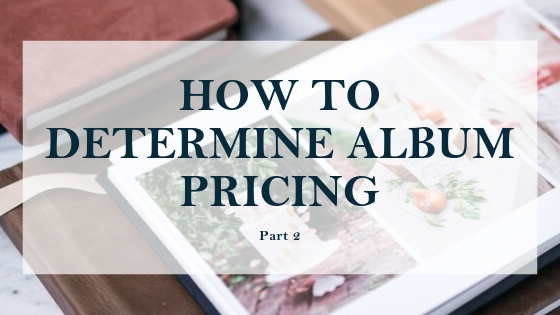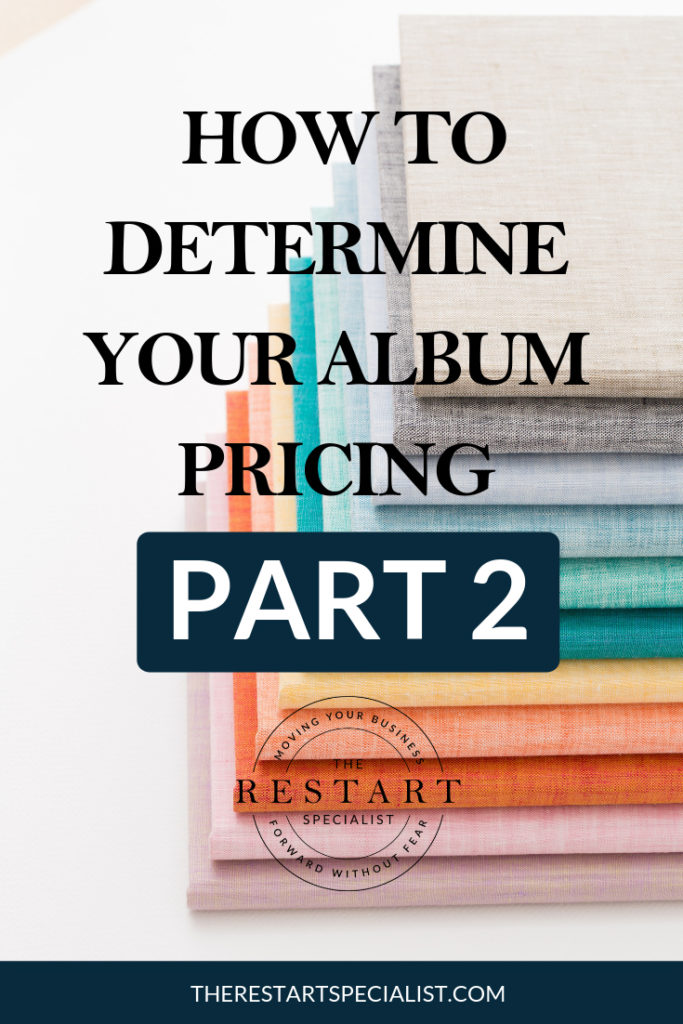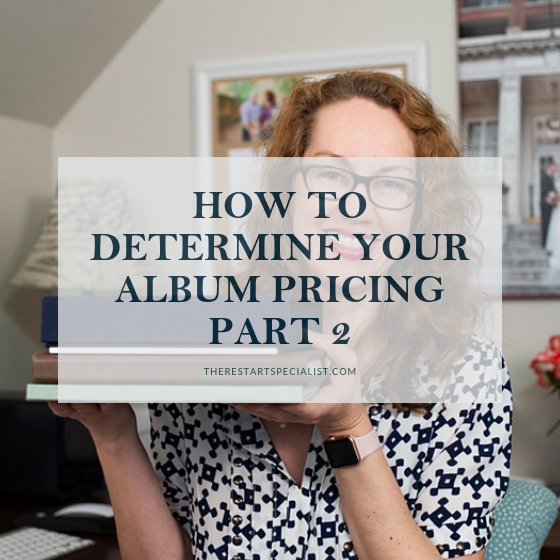 Album Pricing Guide Part 2
Album Pricing Guide Part 2
Today we are back with part 2 of our album pricing guide. Last week we focused on how to pick your album company and determine the option you will offer. In part 2, we are going to cover how to actually price the album and options that we chose from last week. It’s super important, if you have not read part 1 of this series CLICK HERE and read it first.
Start with the Base Album
Look at your base album that you selected from last week and calculate what it costs to produce and ship the album to you. Your base album has no frills or extra add ons and has lots of room for upgrades later. This album has the bare minimum size, cover, and page amounts that you feel comfortable offering. This album “gets the job done”. In our experience, 99% of the time, clients will upgrade something in this album and that is the point.
Once you have all of your options for this album, list how much each costs you. This will give you your base cost. Then you will add all of these together plus shipping and taxes to get your final base cost. Let’s say (as an example) we have an 8×8 cloth album with 20 pages. This album costs us $125. This is the cost to just produce the album or your cost to the album company for them to make it and get it to you. Most photographers stop here with price calculations but that can severely hurt you later.
List Hidden Costs
These costs are not so obvious but can bite you in the butt if you don’t pay attention to them and can add 15-20% more to your base album cost. The best way to actually check these costs is by placing an album order and seeing what extras your album company may charge. Hidden costs may include branding on the album with your studio logo, specialty materials, bindings, or page thickness. The best way to account for these is to include them in your base album cost (what we did above) if they are necessary. Some of these costs are not necessary to place in your base album and can be considered upgrades in your wedding album pricing strategy later on. Ask yourself, “does this option help us to maintain our brand or the integrity of the album”? If the answer is yes then we include it.
Another hidden cost that hurt us in the beginning was secondary shipping. Part of our process was to ship the album directly to us for quality control. In addition to this, we would photograph it for our blog and other social media materials. We would then ship it to the client in the same box and packaging. This additional shipping could be anywhere from $15-25. That can quickly take away from our margins especially if you are not priced appropriately. In our example let’s say we add studio branding and secondary shipping which adds $30 to our base cost to bring our base total to $155.
Markup Albums as Necessary
Now, if you have done the previous steps, you have a base cost of goods for this album. This covers what it costs the album company to make it and ship it. Let’s take it a step further and discuss what we can make as profit. Many photographers will say you have to charge a markup of 3 or 4 on an album. I don’t believe this and have proven this pricing strategy to be incorrect. If you have a straight markup of three across the board, your profit margin will be about 65-68%. That sounds good, but lets factor in any discounts you want to offer or the popularity of the item. You will quickly see that this pricing model does not always work.
Determining markup of an item is a lot more complicated. A good example of this are small prints. A regular small print costs about $1.00 to make. According to the three fold markup rule, you should charge about $3 to make a good profit. I don’t want to sell small prints. People can buy them at any printing facility. I want them to buy prints they can’t get anywhere else. With this small markup, clients will often gravitate toward small prints because they are inexpensive and buy more of them versus bigger prints. If I price those same small prints at $15, clients will be less likely to buy them because they know they can get them cheaper somewhere else. In this case we are using pricing to guide our clients where we want them to go. For our business, we determine our markup by looking at popularity of the album, cost of goods, availability, and difficulty to produce. We use a markup factor of three more as a guide to make sure we don’t drive our prices too low. Your markup is personal to you and is based on your business model, not some arbitrary formula that a random photographer throws out there.
In our example we looked at our base cost to calculate the markup. We determined the album is harder to produce than a standard print, is not in high demand due to nicer options in higher packages, but I want to discourage people from buying it. So this album may serve as my anchor point compared to other packages. With this said, our $155 base album multiplied by a 4.5 factor will cost my client a la carte $620 approximately. Now replicate this with all of your albums in every package to see what true pricing you should be charging your client.
Final Thoughts
This album pricing strategy has taken us years to develop. It is not set in stone and fluctuates constantly. The most important part is that with this strategy, I don’t feel icky selling to my clients as I know the price I am charging is aligned with my business, and the value I bring to my clients. I hope all of you have enjoyed this series and that this helps you to more accurately price your wedding albums.
 Let’s stay connected
Let’s stay connected
Do you want to dive deeper into how to be successful in new markets or are relocating your business and need some help? Come join our course Break into a New Market.
Follow us through social media:
– Subscribe to our newsletter
– Join to our private Facebook page for special live content
– Subscribe to our YouTube channel.
– Join ourTwitter discussion
What did you think of this series? Let me know in the comments

